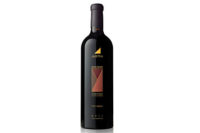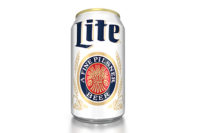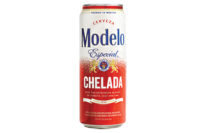Craft brewers' sales growth continues
Seasonals, IPAS and craft beer variety packs lead growth

Samuel Adams’ new spring seasonal, Cold Snap, is available through March in six-packs, 12-packs and in the Samuel Adams Spring Thaw Variety Pack. (Image courtesy of The Boston Beer Co.)


Full Sail Brewing Co. released 26 Cascade Pilsner to commemorate its 26th anniversary. Many craft brewers use naming, packaging and other methods to highlight their history and authenticity, says Nielsen’s Danelle Kosmal. (Image courtesy of Full Sail Brewing Co.)



Although craft beer case and dollar sales came in at a distant third to domestics and imports during the 52 weeks ending Dec. 29, 2013, in Information Resources Inc. (IRI)-measured channels, the burgeoning segment is making strides to garner more of that market share. “The craft category is probably still in somewhat of an infancy stage as far as development,” says Jeff Nowicki, chief strategy officer for Bump Williams Consulting Co., Stratford, Conn. “[It’s] well developed in grocery, well developed in the liquor channel, but in convenience, it doesn’t quite have the space to accommodate a large variety, yet it’s still a huge opportunity for craft.”
| Click here to go back to the 2014 Beer Category Report landing page. |
However, Andrea Riberi, senior vice president of alcohol beverages for New York-based Nielsen, notes that the segment has seen its distribution increase, including into the convenience channel.
“Stores are [starting] to either begin carrying crafts or adding more to their repertoire,” she says. “We’ve seen big gains in the convenience channel this year with distribution now at 80 percent in the channel, which is up 7 points since last year.”
These growth trends also can be found in the segment’s overall case and dollar sales. According to Chicago-based IRI, craft beer’s case sales were up approximately 15 percent, while its dollar sales increased 18 percent in the 52 weeks ending Dec. 29, 2013, in total U.S. supermarkets, drug stores, mass merchandisers, gas and convenience stores, military commissaries, and select club and dollar retail chains.
Considering these strong growth numbers, Bump Williams’ Nowicki says that craft brewers will find even more distribution opportunities going forward.
Beyond channel and regional development, craft beer has found unique ways to resonate with consumers, experts note.
“A lot of craft brewers are playing on their history, so there’s a lot of authenticity there and playing on their historical stories, irreverent naming, playing up with unique packaging, and just finding other ways to talk to consumers,” says Danelle Kosmal, vice president of client services for Nielsen. “We’re seeing how craft beer’s almost playing in the same space where wine has been playing [especially with] ingredients, speaking specifically to the hops and how important they are [to beer].”
She adds that programs highlighting food and beer pairings have been successful for craft brands. For example, the Brewers Association, Boulder, Colo., hosts its annual Savor event, which highlights food and craft beer pairings. At the 2013 edition, beers from 76 small and independent craft brewers represented 39 different styles, the association said.
Styles also are important when discussing craft beer. In 2013, seasonals, wheat beers, variety packs and IPAs led sales, Nielsen’s Riberi notes.
“They’re driving a lot of the growth,” she says. “Seasonals alone were 24 percent of craft growth, with variety packs and American IPAs at 15 percent each.”
These varietals might be appealing to consumers’ desires for what’s new and unique, she adds. “There’s a sense of excitement when walking into the craft aisle because of all of the change going on,” Riberi explains. “With seasonals only available for a couple of months, people are saying, ‘Wow, this is new, this is different.’ The variety packs also help people experience multiple offerings in just one pack.”
Samuel Adams, a brand of Boston-based The Boston Beer Co., released Cold Snap, a new spring seasonal that is available January through March in the Samuel Adams Spring Thaw Variety Pack along with another new release: Escape Route. Cold Snap is the brewer’s take on a Belgian-style white ale made with wheat and a blend of 10 different fruits, flowers and spices, the company says. In addition to the variety pack, the limited-edition brew is available in six-packs and 12-packs.
Bump Williams’ Nowicki does not anticipate seeing any decline in dollar or volume sales for craft beer but rather a continuation of current sales trends.
“I don’t see any reason that this is going to slow down,” he says. “You have a more fluid consumer here. There’s a consumer that’s willing to spend; you’ve got on-premise that’s pushing craft; and they are maneuvering their presentation of craft to accommodate more flavors, more styles, more profiles, more variety, so craft I think will continue to speed ahead.”
Nielsen’s Riberi echoes similar thoughts but does anticipate an eventual slowdown. “I think craft beer has seen huge growth over the past few years, and certainly it hasn’t hit its turning point,” she says. “We do think the growth will start to slow eventually.”
She adds that limited shelf space could be a tipping point, but for now there’s more success to come from the craft beer segment.
Looking for a reprint of this article?
From high-res PDFs to custom plaques, order your copy today!









